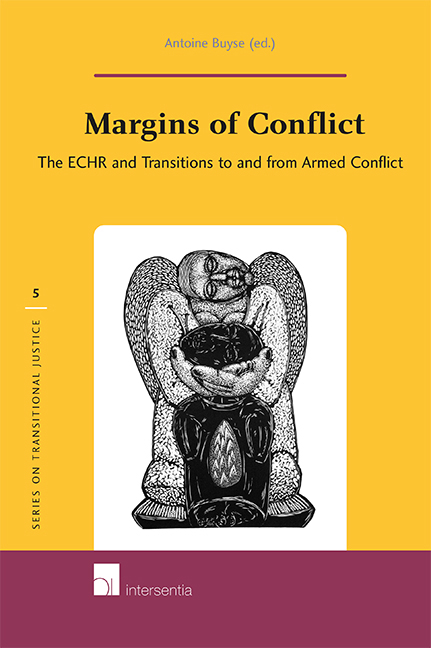
-
Select format
-
- Publisher:
- Intersentia
- Publication date:
- December 2020
- November 2010
- ISBN:
- 9781839700750
- 9789400001572
- Dimensions:
- Weight & Pages:
- Dimensions:
- Weight & Pages:
- Series:
- Series on Transitional Justice
- Subjects:
- Law, Human Rights
You may already have access via personal or institutional login- Series:
- Series on Transitional Justice
- Subjects:
- Law, Human Rights
Book description
The European Convention on Human Rights was drafted in the wake of World War II. The dark shadows of war have never fully receded from Europe however. Armed conflict has resurged time and again, from Northern Ireland to Cyprus and Turkey, and from the former Yugoslavia to the Caucasus. This book focuses on the margins of conflict: human rights aspects of transitions from peace to armed conflict and vice versa. Firstly, it seeks to explore what limits human rights put on European societies which are on the brink of armed conflict. Secondly, it surveys the consequences of human rights violations committed during the armed conflict by looking at the aftermath of war. In a stimulating way, experts in their field offer food for thought on a broad range of material and especially procedural issues such as the territorial scope of the Convention, states of emergency, freedom of expression and conflict escalation, obligations relating to enforced disappearances, interim measures, and pilot judgments. Taken together, they reflect both the potential and limitations of human rights in the run-up to conflicts and their aftermath.
Contents
Metrics
Full text views
Full text views help Loading metrics...
Loading metrics...
* Views captured on Cambridge Core between #date#. This data will be updated every 24 hours.
Usage data cannot currently be displayed.
Accessibility standard: Unknown
Why this information is here
This section outlines the accessibility features of this content - including support for screen readers, full keyboard navigation and high-contrast display options. This may not be relevant for you.
Accessibility Information
Accessibility compliance for the PDF of this book is currently unknown and may be updated in the future.

